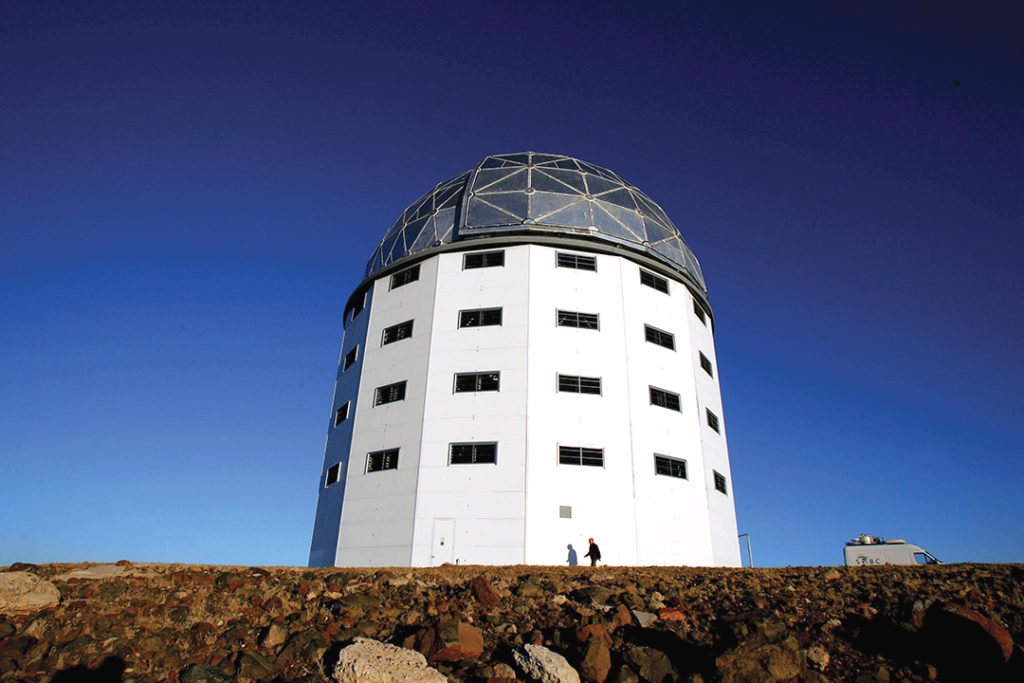REUTERS
The Southern African Large Telescope (SALT) has helped detect a type of star known as a white dwarf pulsar, the first discovery of its kind. The news has astronomers eager to use the largest optical telescope in the Southern Hemisphere to unlock the galaxy’s secrets.
Scientists believe neutron stars, objects about the size of the sun that shrink at the end of their lives, eventually produce black holes. These incredibly dense objects have been known for decades to produce pulsars, which emit regular radio waves and other electromagnetic radiation at rates up to 1,000 pulses per second.
On a hill in the desolate Northern Cape province about 350 kilometers north of Cape Town, the $43 million SALT telescope used its powerful spectroscopy light measurement tool to prove the existence of the white dwarf pulsar.
Shared by a consortium of partners from Europe, India, the United States and South Africa, SALT’s queuing system lets it interrupt routine observations and within minutes focus its 10-meter optical telescope on new discoveries.
Quick reaction times, and being significantly cheaper than similar European or American facilities in producing science data, are key competitive advantages, said a senior astronomer at the SALT consortium.
In February 2016, SALT was the first major telescope to take a spectrum of a supernova in the nearby Centaurus A galaxy hours after its discovery.
It also helped reveal one of the biggest explosions ever recorded in the universe, 200 times more powerful than a typical supernova and believed to have shone at 570 billion times the brightness of the sun.
Together with Australia, South Africa is also co-hosting the world’s biggest and most advanced radio telescope, the $2 billion “Square Kilometer Array,” which will study the origins of the universe and help probe for extraterrestrial life. In July 2016, officials announced that the telescope had been used to discover 1,300 previously unknown galaxies.

